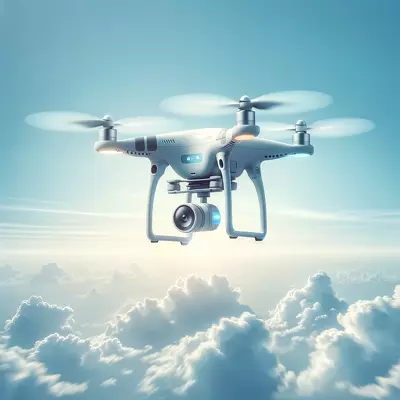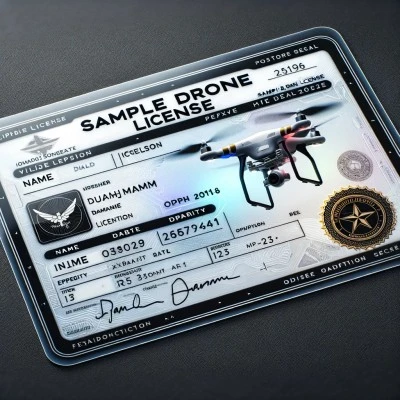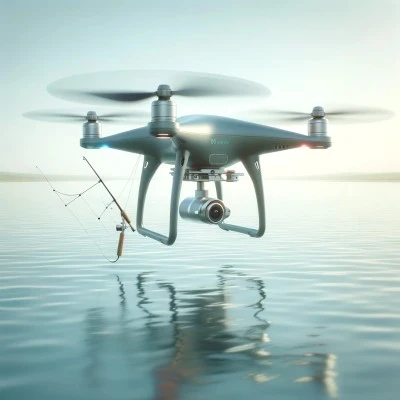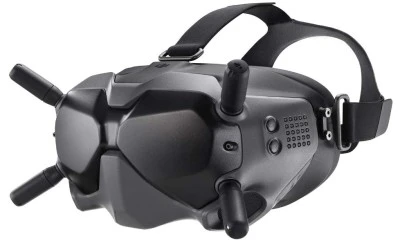Beyond the Horizon: Pushing the Limits of How Far a Drone Can Fly from Its Controller

Exploring the capabilities of modern drones, one key aspect is their operational range. This distance, defined by how far a drone can travel from its controller before losing connection, varies significantly. Factors influencing this range include the drone’s design, the technology it employs, and the environment in which it is flown. Understanding these parameters is crucial for both hobbyists and professionals in maximizing their drone’s potential.
I. Introduction to Drone Range
A. Overview of Drone Technology
Unmanned Aerial Vehicles (UAVs), commonly known as drones, have evolved from niche gadgets to indispensable tools across various industries. Initially deployed for military operations, drones have seamlessly integrated into civilian sectors, including agriculture, filmmaking, delivery services, and emergency response. This rapid expansion is underpinned by advancements in technology, making drones more accessible, reliable, and versatile. Central to a drone’s utility is its range, which determines the distance it can cover while maintaining communication with its controller.
B. Importance of Operational Range
Operational range is a critical factor in the effectiveness and applicability of drone technology. For recreational users, a longer range offers the freedom to explore and capture stunning aerial footage. In commercial settings, the extended range ensures that drones can cover vast agricultural lands for monitoring crops or reach remote areas for delivering medical supplies. Furthermore, in rescue operations, a drone’s ability to traverse considerable distances can make the difference between life and death. Consequently, understanding and optimizing the range of drones is of paramount importance for users across the spectrum.
II. Factors Affecting Drone Range
A. Drone Design and Specifications
The range of a drone is predominantly determined by its design and specifications. Battery capacity plays a pivotal role, as it dictates the flight duration. Similarly, the choice of materials influences the drone’s weight and aerodynamics, directly impacting its efficiency and range. Moreover, the type of propulsion system and the power of the motors also contribute to how far the drone can fly. High-end models often incorporate sophisticated technology to enhance their range and endurance.
B. Environmental Considerations
Environmental factors significantly influence a drone’s operational range. Wind speed and direction can either aid or hinder a drone’s movement, affecting its battery consumption and range. Topographical features like mountains or buildings can obstruct signal transmission, leading to potential connectivity issues. Additionally, temperature extremes can impact battery performance and, by extension, the drone’s range. Pilots must consider these factors and adjust their flight plans to optimize the drone’s performance.
C. Technological Limitations
The technology underpinning the drone’s communication system defines its maximum range. Most drones use radio waves for control and telemetry, with the range depending on the frequency and power of the transmission. However, this signal can be disrupted or weakened by interference from other electronic devices or physical barriers. Advances in technology, such as the integration of 5G networks and satellite communications, are continually pushing the boundaries of how far drones can operate from their controllers.
III. Measuring the Range of a Drone
A. Standard Testing Conditions
Manufacturers often provide a maximum range figure under ideal conditions as a benchmark for potential buyers. These tests are conducted in controlled environments free of interference and with optimal weather conditions. While these figures offer a baseline, users should treat them as best-case scenarios rather than guarantees.
B. Real-World Performance Variability
In practice, a drone’s actual range is often less than the manufacturer’s claim. Factors like signal interference, physical obstructions, and weather conditions can drastically reduce a drone’s operational range. Pilots should conduct thorough pre-flight assessments and consider the specific conditions of their intended flight area to ensure a safe and efficient operation.
IV. Extending the Range of a Drone
A. Hardware Modifications
Enthusiasts and professionals looking to extend their drone’s range can consider hardware upgrades. Replacing the stock antennas with high-gain directional antennas can significantly improve signal strength and range. Similarly, upgrading to more efficient batteries or lighter components can increase flight time, allowing the drone to cover greater distances.
B. Software Enhancements
Software plays a crucial role in a drone’s performance. Firmware updates often come with optimizations that can improve range and efficiency. Additionally, flight planning software can help pilots plot the most efficient routes, conserving battery life and extending the drone’s operational range.
C. Best Practices for Optimal Range
Adopting best practices is essential for maximizing a drone’s range. Regular maintenance, such as checking the battery’s health and ensuring the propellers are in good condition, can prevent performance drops. Understanding and respecting local regulations and weather conditions can also help pilots make the most of their drone’s capabilities.
V. Legal and Safety Considerations
A. Regulatory Guidelines
As drones become more prevalent, regulations governing their use have become increasingly stringent. These rules often stipulate maximum altitude, line-of-sight requirements, and no-fly zones, all of which can impact a drone’s operational range. Pilots must stay informed about the regulations in their area to ensure compliant and safe flights.
B. Ethical Use and Privacy Issues
Drones raise important ethical considerations, particularly regarding privacy. Pilots should be mindful of others’ privacy when flying, avoiding sensitive or private areas. Responsible use also involves minimizing potential disturbances and ensuring the safety of people and property. Adhering to ethical guidelines not only fosters community trust but also promotes the positive growth of drone technology.
IV. FAQs
Q: What is the average operational range for consumer drones?
A: Consumer drones typically have an operational range between 0.5 to 8 miles, depending on the model and conditions.
Q: Can weather conditions affect how far a drone can fly from the controller?
A: Yes, adverse weather conditions like strong winds, rain, or extreme temperatures can significantly reduce a drone’s range and flight stability.
Q: Are there legal restrictions on how far a drone can fly from its controller?
A: Yes, many countries have regulations that limit the distance a drone can be from the controller, often requiring the drone to remain within the operator’s line of sight unless specific conditions are met.
Q: How can I extend the range of my drone?
A: You can extend your drone’s range through hardware modifications, such as high-gain antennas and and power-efficient batteries, or through software optimizations and updates.
Q: Do all drones have the same operational range?
A: No, the operational range varies widely depending on the drone’s design, specifications, and communication and navigation technology.
Q: Is it possible to recover a drone if it flies beyond its operational range?
A: Most modern drones are equipped with safety features like automatic return-to-home (RTH) that activates when the drone loses signal or when the battery is low, reducing the risk of losing the drone.
Q: How can I accurately measure my drone’s operational range?
A: For the most accurate measurement, conduct range tests in a controlled environment without interference, gradually increasing the distance while ensuring you adhere to local regulations and safety guidelines.
VII. Conclusion
A. Recap of Key Points
This article explored the critical factors influencing a drone’s operational range, including design specifications, environmental conditions, and technological limitations. We also discussed practical ways to extend a drone’s range through hardware modifications, software enhancements, and best practices for optimal performance. Finally, we highlighted legal and safety considerations to ensure responsible and compliant drone operations.
B. Future of Drone Range Capabilities
As technology advances, we can anticipate significant improvements in drone range capabilities. Innovations in battery technology, signal transmission, and autonomous flight systems are poised to expand the horizons of drone operations. These advancements promise to open new possibilities for commercial, scientific, and recreational drone use, making them an even more integral part of our everyday lives.
VIII. Suggested Readings
The world of drones is rapidly evolving, and staying informed is key to understanding and leveraging this technology to its fullest potential. Here are some books that offer valuable insights into drone technology, applications, and the future of uncrewed flight:
- “The Drone Pilot’s Handbook” by Adam Juniper – A comprehensive guide for beginners and seasoned drone pilots alike, covering everything from the basics of flying to capturing stunning aerial photography.
- “Drone Technology in Architecture, Engineering, and Construction: A Strategic Guide to Unmanned Aerial Vehicle Operation and Implementation” by Daniel Tal – This book offers a deep dive into the application of drone technology in the AEC industries, exploring the operational, legal, and logistical aspects.
- “Drones: The Professional Drone Pilot’s Manual” by Brian Halliday – A resource for aspiring professional pilots, focusing on advanced drone operation techniques, regulatory compliance, and tips for turning your passion into a profession.
- “Drones and the Future of Air Warfare: The Evolution of Remotely Piloted Aircraft” by Michael P. Kreuzer – This book delves into the military aspect of drone technology, examining its impact on modern warfare and future implications.
These resources provide a wealth of knowledge for anyone interested in the technical, practical, or ethical aspects of drone technology. Whether you’re a hobbyist, a professional, or simply a tech enthusiast, delving into these readings will deepen your understanding and appreciation of the vast potential of drones.





